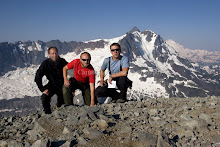
A woman totes a cart filled with fruit she bought at the feria (farmers' market) Saturday in the San Jose suburb of Tres Rios, Costa Rica. Hundreds from the surrounding neighborhoods flock to the center of town to buy and sell fruit, vegetables and arts and crafts. Young boys are seen pushing wheel barrels down the street to to carry home their food.

A vendor sits at his booth along the street Saturday in Tres Rios.

Among the produce and arts and crafts sold at the feria are various types of fresh pressed or squeezed juices. This juice vendor actually has a sugar cane press, which is right next to the containers of juice, that they use to extract the sugar for the drinks. Guarabana juice is a popular refreshment throughout Costa Rica.

A customer, left, inspects some produce while the vendor arranges his products at the feria in Tres Rios Saturday. Among the plethora of fruit and vegetable vendors are a handful of vendors who sell flowers.

A man sets up shop away from the main crowd, but near the central park, to sell bananas out of the trunk of his car Saturday in Tres Rios.












